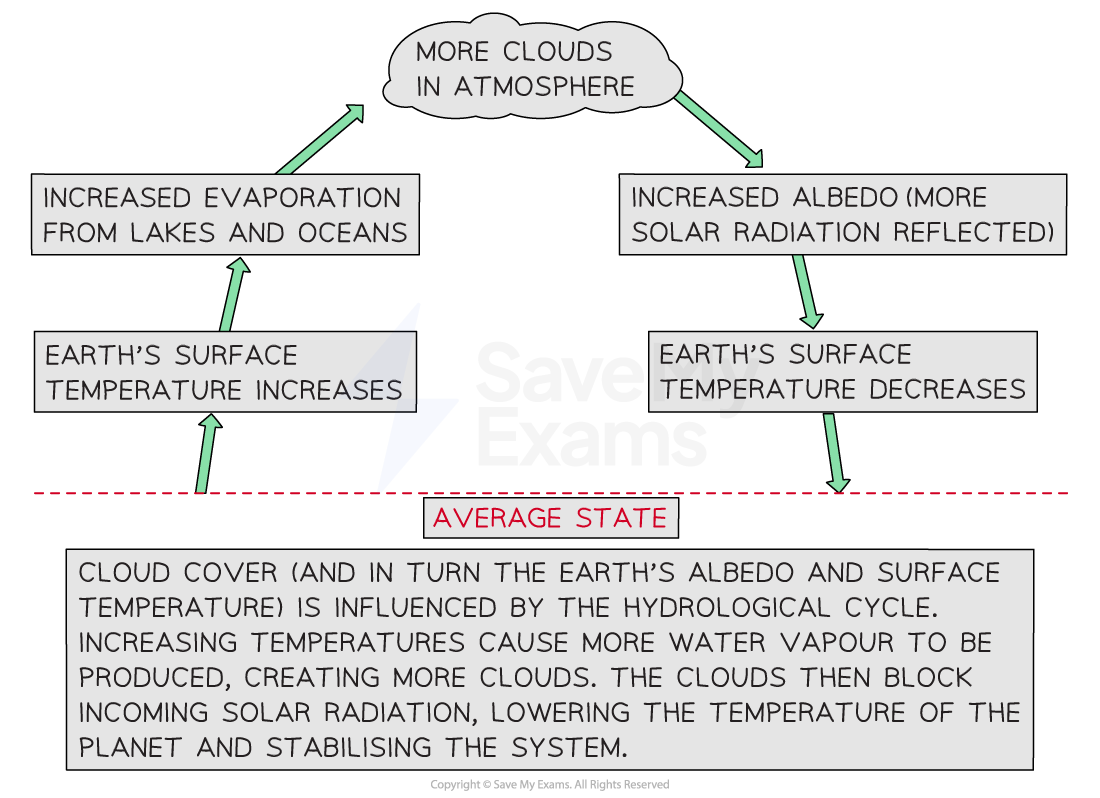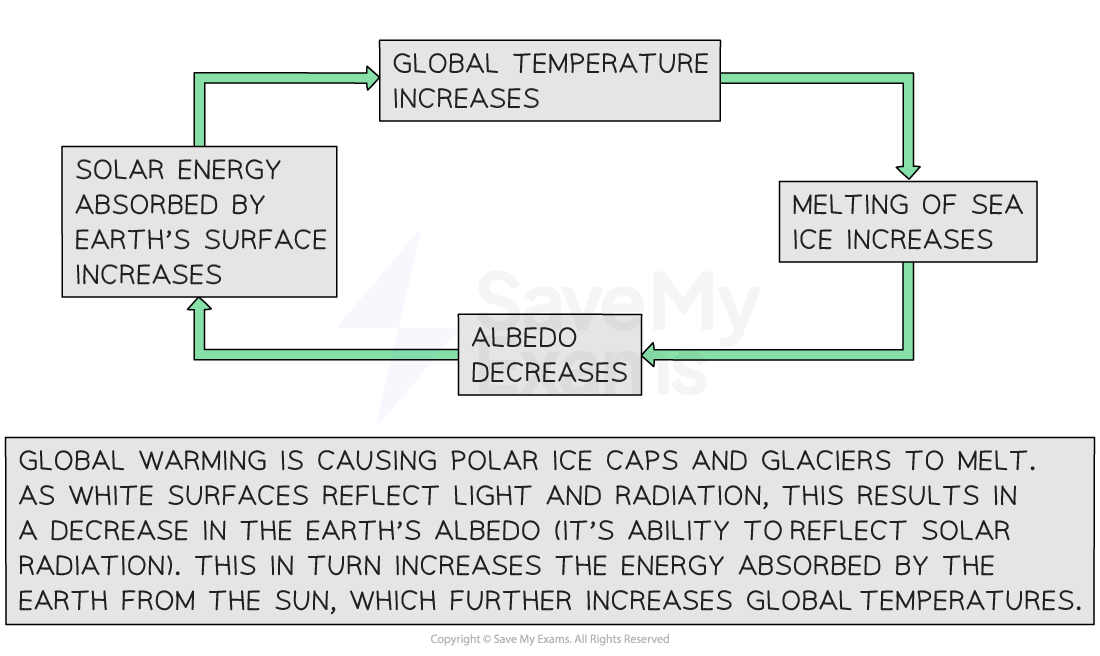Stable Equilibrium & Feedback Mechanisms (HL IB Environmental Systems & Societies (ESS))
Revision Note

Author
Alistair MarjotExpertise
Biology & Environmental Systems and Societies
Stable Equilibrium
An equilibrium refers to a state of balance occurring between the separate components of a system
Open systems (such as ecosystems) usually exist in a stable equilibrium
This means they generally stay in the same state over time
A stable equilibrium allows a system to return to its original state following a disturbance
This state of balance is maintained by stabilising negative feedback loops
Stable equilibria
The main type of stable equilibrium is known as steady-state equilibrium
A steady-state equilibrium occurs when the system shows no major changes over a longer time period, even though there are often small, oscillating changes occurring within the system over shorter time periods
These slight fluctuations usually occur within closely defined limits and the system always returns to its average state
Most open systems in nature are in steady-state equilibrium
For example, a forest has constant inputs and outputs of energy and matter, which change over time
As a result, there are short-term changes in the population dynamics of communities of organisms living within the forest, with different species increasing and decreasing in abundance
Overall, however, the forest remains stable in the long-term

Another type of stable equilibrium is static equilibrium
There are no inputs or outputs (of energy or matter) to the system and therefore the system shows no change over time
No natural systems are in static equilibrium—all natural systems (e.g. ecosystems) have inputs and outputs of energy and matter
Inanimate objects such as a chair or a desk could be said to be in static equilibrium

Stable vs unstable equilibria
A system can also be in an unstable equilibrium
Even a small disturbance to a system in unstable equilibrium can cause the system to suddenly shift to a new system state or average state (i.e. a new equilibrium is reached)

Negative & Positive Feedback
Most systems involve feedback loops
These feedback mechanisms are what cause systems to react in response to disturbances
Feedback loops allow systems to self-regulate

There are two types of feedback loops:
Negative feedback
Positive feedback
Negative feedback
Negative feedback is any mechanism in a system that counteracts a change away from equilibrium
Negative feedback loops occur when the output of a process within a system inhibits or reverses that same process in a way that brings the system back to its average state
In this way, negative feedback is stabilising—it counteracts deviation from equilibrium
Negative feedback loops stabilise systems


The Daisyworld model
The Daisyworld model was a computer simulation developed by James Lovelock and Andrew Watson in the 1980s
The model was based on a theoretical planet with only two types of organisms: black daisies and white daisies
These daisies interacted with the environment by affecting the planet's albedo (the amount of solar radiation it can reflect away)
Global temperature regulation due to life:
In the Daisyworld simulation, as the amount of sunlight (solar luminosity) is increased, black daisies thrive more due to their ability to absorb more sunlight
This causes the planet's albedo to decrease, trapping more heat and leading to an increase in global temperatures
This makes the planet more habitable for white daisies
The growth of white daisies causes the planet's albedo to increase, leading to a decrease in global temperatures
As both daisy populations compete, they eventually reach a stable equilibrium
This steady-state equilibrium stabilises Daisyworld's surface temperature, ensuring both populations can survive in the long-term
This cycle of temperature regulation demonstrates an important negative feedback loop (where changes in one direction are countered by processes that work to stabilise the system in the opposite direction)
Contrast with a dead planet:
In contrast, on a dead planet without daisies, there are no negative feedback mechanisms for regulating temperature
Without organisms to adjust albedo and therefore trigger temperature changes, the dead planet's climate becomes more extreme over time, either excessively hot or cold, depending on the initial conditions, resulting in a planet that cannot sustain life
Positive feedback
Positive feedback is any mechanism in a system that leads to additional and increased change away from equilibrium
Positive feedback loops occur when the output of a process within a system feeds back into the system in a way that moves the system increasingly away from its average state
In this way, positive feedback is destabilising—it amplifies deviation from equilibrium and drives systems towards a tipping point where the state of the system suddenly shifts to a new equilibrium
Positive feedback loops destabilise systems


Other examples of positive feedback
Positive feedback loops amplify changes within a system
They can lead to either an increase or a decrease in a system component.
Example: population decline
Population decline reduces reproductive potential
Reduced reproductive potential further decreases the population
This amplifying loop accelerates the decline
Example: population growth
Population growth increases reproductive potential
Increased reproductive potential triggers further population growth
This positive feedback loop accelerates population expansion

You've read 0 of your 0 free revision notes
Get unlimited access
to absolutely everything:
- Downloadable PDFs
- Unlimited Revision Notes
- Topic Questions
- Past Papers
- Model Answers
- Videos (Maths and Science)
Did this page help you?